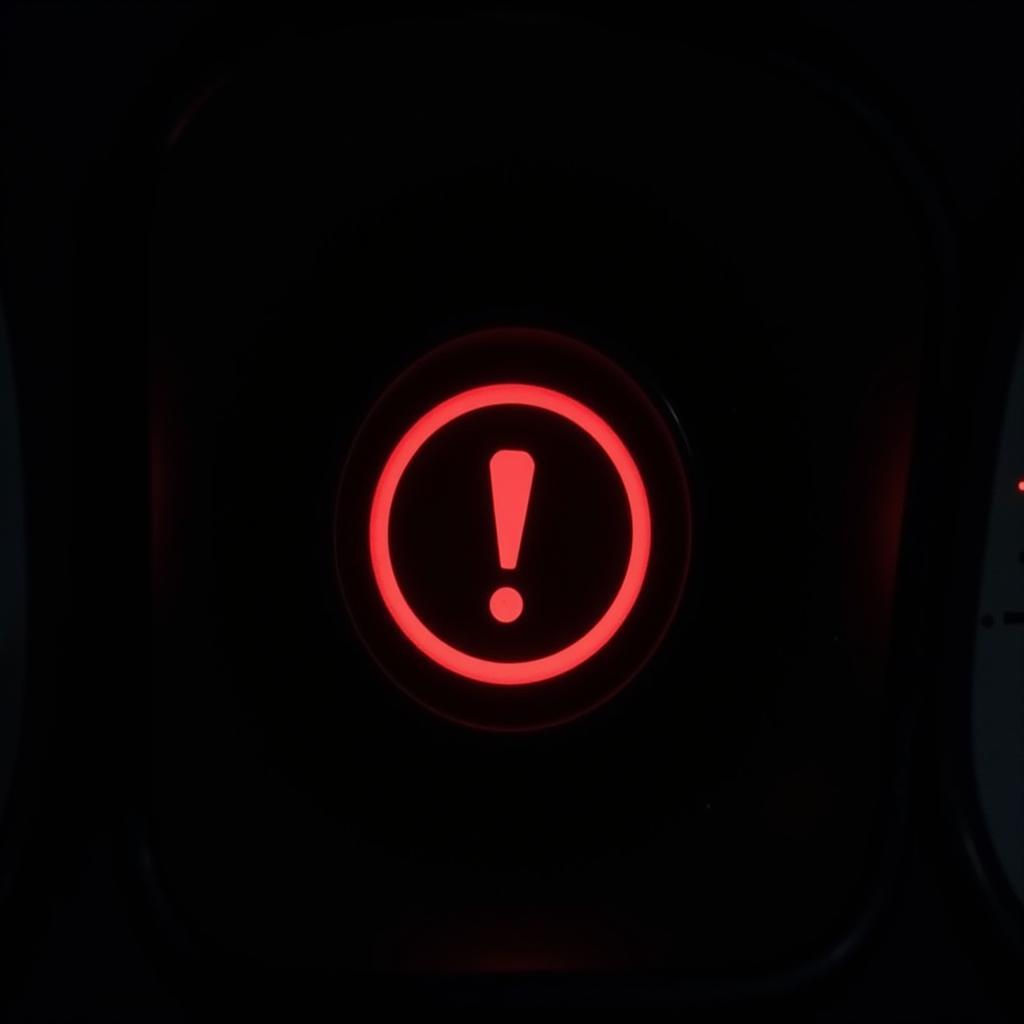Seeing a warning light pop up on your dashboard can be a nerve-wracking experience, especially when it concerns your brakes. If your BMW 118d is displaying a brake pad warning light, it’s essential to address it promptly. While this warning usually signifies worn brake pads, sometimes it might just be a sensor issue or a simple reset requirement after a pad replacement. This comprehensive guide will walk you through understanding the warning light, potential causes, and a step-by-step guide on how to reset it.
 BMW 118d dashboard displaying brake pad warning light
BMW 118d dashboard displaying brake pad warning light
Understanding the BMW 118d Brake Pad Warning Light
The brake pad warning light on your BMW 118d is a crucial safety feature designed to alert you when your brake pads wear down to a point requiring replacement. The warning light is triggered by a sensor embedded within the brake pad itself. Once the pad wears down to a certain level, the sensor makes contact with the brake rotor, completing a circuit and illuminating the warning light on your dashboard.
Common Causes of the Brake Pad Warning Light
While worn brake pads are the most common reason for the warning light, there are a few other potential culprits:
- Worn Brake Pads: As mentioned earlier, this is the most likely reason.
- Faulty Brake Pad Sensor: Sometimes, the sensor itself can malfunction, triggering the warning light prematurely.
- Damaged Wiring: A damaged or frayed wire leading to the sensor can disrupt the signal.
- Reset Required After Pad Replacement: If you’ve recently replaced your brake pads, the warning light might still be on because it needs a manual reset.
How to Reset the BMW 118d Brake Pad Warning Light
Resetting the brake pad warning light in your BMW 118d is usually straightforward, especially after a pad replacement. However, it’s crucial to remember that resetting the light without addressing the underlying cause can be dangerous. If you’re unsure about the condition of your brake pads or suspect any other issues, it’s best to consult with a qualified mechanic.
Here’s a step-by-step guide on how to reset the brake pad warning light yourself:
- Safety First: Before beginning any work on your car, ensure it’s parked on a level surface, the engine is off, and the parking brake is engaged.
- Locate the OBD Port: The OBD (On-Board Diagnostics) port is typically found under the dashboard on the driver’s side.
- Connect an OBD-II Scanner: A simple OBD-II scanner is sufficient for this task. Connect it to the OBD port.
- Turn on the Ignition: Turn your car’s ignition to the “on” position but don’t start the engine.
- Access the Brake System: Using the scanner, navigate to the “Brake System” or “Service Reset” menu. The exact wording may vary depending on your scanner model.
- Select “Brake Pad Reset”: Choose the option for “Brake Pad Reset” or a similar term within the Brake System menu.
- Follow On-Screen Prompts: The scanner will guide you through the reset process. Follow the on-screen prompts carefully.
- Confirmation: Once the reset is successful, you’ll receive a confirmation message on the scanner.
Important Note: If the brake pad warning light reappears immediately after the reset, or if you’re experiencing any braking issues, it’s crucial to have your brake system inspected by a qualified mechanic without delay.
When to Consult a Mechanic
While resetting the brake pad warning light can sometimes be a DIY task, certain situations warrant professional attention. Contact a qualified mechanic if:
- The Warning Light Returns: If the light reappears after the reset, it signifies an underlying problem that needs addressing.
- You Experience Braking Issues: Any unusual noises, vibrations, or a soft or spongy brake pedal indicate a potential brake system problem requiring immediate attention.
- You’re Unsure about the Process: If you’re uncomfortable performing the reset yourself, it’s always best to err on the side of caution and seek professional help.
“Remember,” says Tim Miller, a senior automotive technician with over 20 years of experience, “addressing brake issues promptly is paramount for your safety and the longevity of your vehicle. Never ignore brake warnings, even if you think it might be a simple reset.”
Keeping Your BMW 118d Brakes in Top Condition
Proactive maintenance is key to a safe and enjoyable driving experience. Here are a few tips to keep your BMW 118d’s brakes in optimal condition:
- Regular Inspections: Have your brakes inspected at least once a year, or more frequently if you drive in demanding conditions.
- Quality Brake Pads: Opt for high-quality brake pads from reputable brands for optimal performance and longevity.
- Brake Fluid Flush: Flush your brake fluid every 2-3 years or as recommended by your owner’s manual.
- Mindful Driving Habits: Avoid aggressive driving habits such as hard braking, which can accelerate brake wear.
 New brake pads and rotors for BMW 118d
New brake pads and rotors for BMW 118d
By following these steps and adhering to a regular maintenance schedule, you can ensure the optimal performance and safety of your BMW 118d’s braking system.
FAQ
Q: How often should I replace my brake pads?
A: There’s no definitive answer as brake pad lifespan varies depending on driving style and conditions. However, it’s generally recommended to have them inspected every 12,000 miles.
Q: Can I drive with the brake pad warning light on?
A: While technically possible for a short distance, it’s strongly advised against. Driving with worn brake pads can severely compromise your safety.
Q: Is it necessary to use a scanner to reset the brake pad warning light?
A: Yes, in most modern BMW models, including the 118d, a scanner is required to reset the light after a brake pad replacement.
Q: What should I do if the warning light stays on after replacing the brake pads and resetting it?
A: This indicates a potential issue with the brake system. It’s crucial to consult with a qualified mechanic immediately.
Q: Can I use any OBD-II scanner for the reset?
A: While most basic OBD-II scanners can read codes, you might need a more advanced one with specific software to perform the brake pad reset on your BMW 118d.
